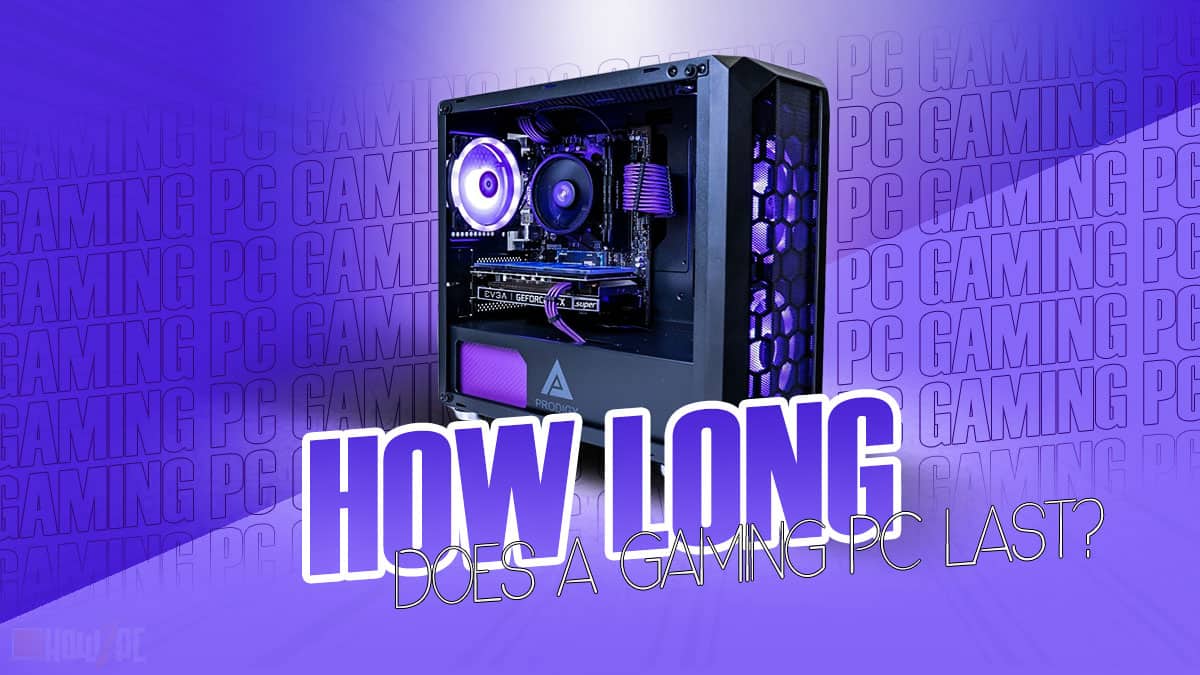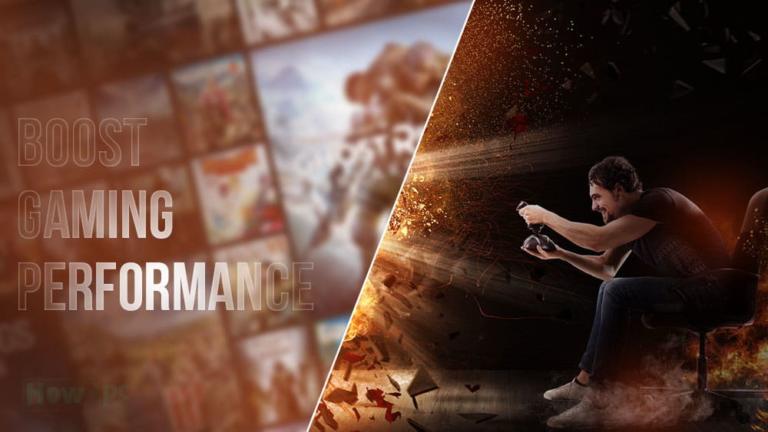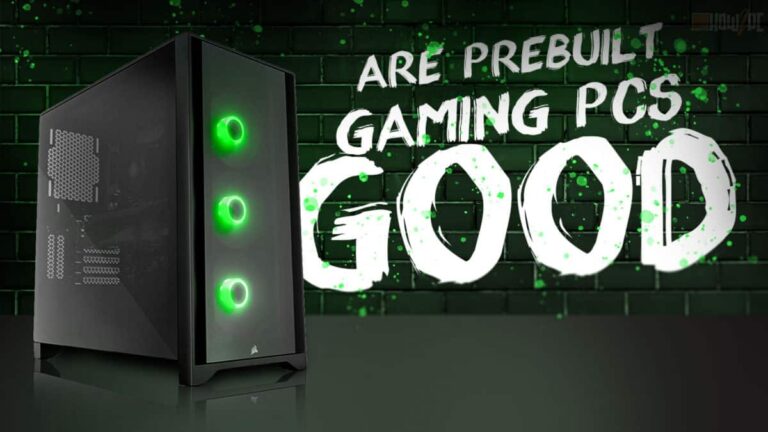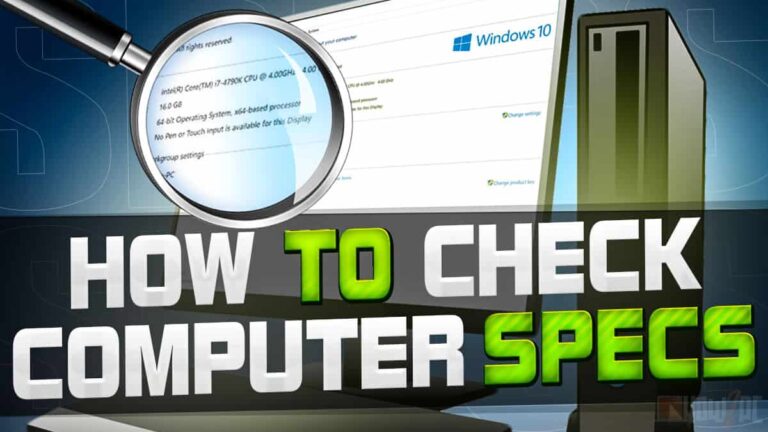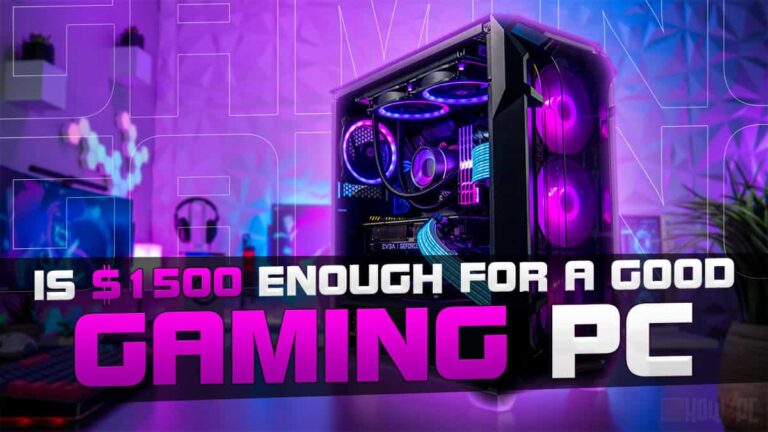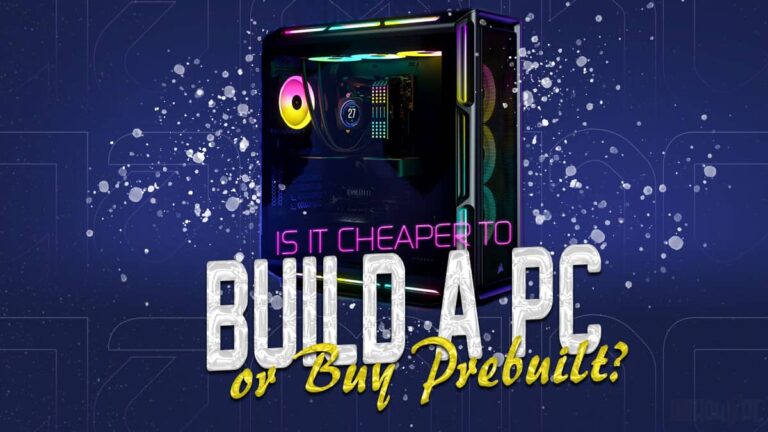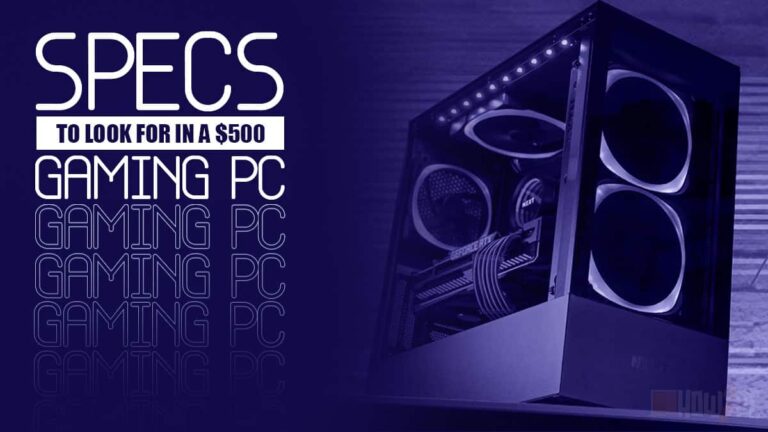If you are investing a handsome amount of money on a gaming PC, then it is quite natural that you want that gaming PC for a good period of time.
Therefore, having seen the transitioning phases of the PC gaming industry, I know why out of curiosity you would want to know how long a gaming PC lasts.
The thing however is that determining the life of a gaming PC is not as easy as it may seem but don’t worry in this article, I am going to present to you this complex subject in a very easy manner.
At the end of the article, you will be able to easily distinguish the current life of any existing gaming PC which will allow you to not only put your money in the correct PC but will also save you from upgrading a PC after every year or so.
So, without further ado let’s begin.
How Long Does a Gaming PC Last?
A gaming PC will last you about 3 years before requiring an upgrade if you plan on planning all the latest games at the best possible settings. However, if you are fine with playing games at toned down graphics and lower FPS then you can extract 5 years out of a gaming PC, of course depending on the upfront investment you make on your PC which determines its gaming capability
That being said though, this was just the gist of it. There is a lot more work that goes into determining the lifespan of a gaming PC.
Generally speaking, the longevity of a gaming PC can be divided into two types. One concerns the shelf life of the hardware components used inside the PC while the other deals more with the viability of components in relation to gaming in the long run.
Shelf Life of PC Components
The electronic components used in the PC usually have a long lifespan. Unless there is a manufacturing fault these components don’t expire till a while.
Normally, we associate the shelf life of PC components to be around 5 to 7 years. Most manufacturers also have a 3 year or more warranty on their products which further strengthens one’s belief that in the long life of PC components.
Viability of Key PC components in the Long Run
I am sure most gamers would know that the age of PC components depends on their performance capability.
You see, games are constantly evolving, and each new release pushes the graphical boundaries of what is possible in gaming. Of course, this evolution and graphics and other physics although very appealing to the eye requires more power.
This is the reason we see new games demanding higher and higher specifications. Therefore, as PC games require more power the old components in the computer can no longer cope up with the power demanded.
This is when their performance capability is no longer able to match the performance requirement of the game leading to the components becoming obsolete as to say.
The best way by which you can see this is by measuring the FPS your PC is giving you. If your computer is able to play modern games at 60 + FPS then the components are not obsolete yet but if the FPS starts falling below 60 in modern games then a PC upgrade is due.
I know you want to find out how quickly the components become obsolete and well I am afraid I don’t have an exact answer for that.
This is because there are all sorts of various components you can get at different prices. Of course, the pricier high-end stuff will age better than lower-end equipment.
The average time frame of the most important components is as follows:
Graphics Card
The graphic card is the component you will be upgrading the most in your PC since it is directly responsible for the FPS that games will run at. The performance viability of graphic cards can be divided as follows:
- Higher-End Graphic Cards
These are graphic cards that fall above the $500 price tag. These will require an upgrade every 3 to 5 years. In the 1–5-year time span, they will be able to play all modern games at 60 FPS.
An example of such graphics card will be the Nvidia RTX 3070 or the AMD RX 6800XT
- Low-End Graphic Cards
These are the graphic cards that fall below the $500 price tag. They will require an upgrade every couple of years.
An example of this category of graphics card includes the Nvidia GTX 1660ti, Nvidia RTX 3060, and the AMD RX 6600XT.
CPU
The lifespan of a CPU ranges from 2 to 4 years depending on its core count and thread performance. The higher core count processors like 8 cores or higher will require a due upgrade in 4 years’ time. While the CPUs with 6 cores or less need to be upgraded every 2 or 3 years.
Related Guides
Check out our price-focused prebuilt PC guides below.
- Best Gaming PC Under 500
- Best Gaming PC Under 800
- Best Gaming PC Under 1000
- Best Gaming PC Under 1500
- Best Gaming PC Under 2000
Check out our GPU-focused prebuilt PC guides below.
- Best RTX 3070 Pre-built Gaming PC
- Best RTX 3080 Pre-built Gaming PC
- Best RTX 3060 Pre-built Gaming PC
- Best RTX 3090 Pre-built Gaming PC
Check out our aesthetics-focused gaming PC guides below.
Check out some of the other related guides.
- How to Check Computer Specs
- Gaming Laptop vs Desktop
- Parts Needed to Build a Gaming PC
- How Much Does it Cost to Build a Gaming PC
- How Much Storage Should a Gaming PC Have
- Best Prebuilt Gaming PC
Conclusion
With everything said and done it is time to wrap up this article. To quickly summarize, in this article I provided you with the shelf-life span of PC components as well as the real-world viability standpoint of the CPU and the graphics card.
The shelf life of PC components ranges anywhere from 5 to 7 years while the viability of these components is not the same. In the long run, a processor will be viable for 2 to 4 years with an upgrade due after that time frame.
While a graphics card will need to be upgraded every 3 to 5 years depending on which model you are currently using. Overall, a gaming PC should last you 3 to 5 years depending on whether you have a high-end gaming desktop or a low-end gaming machine.
With that said, I hope that you found the information mentioned in this article helpful. Before I sign off, do let me know in the comment section down below for how long you have been using your current PC and whether it is holding up fine or not.

